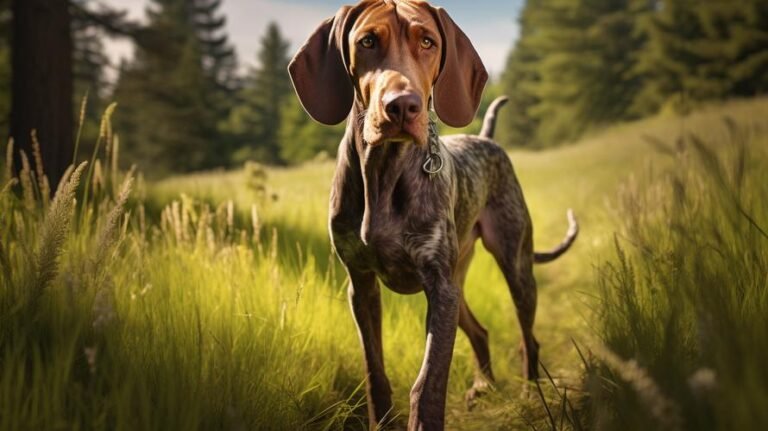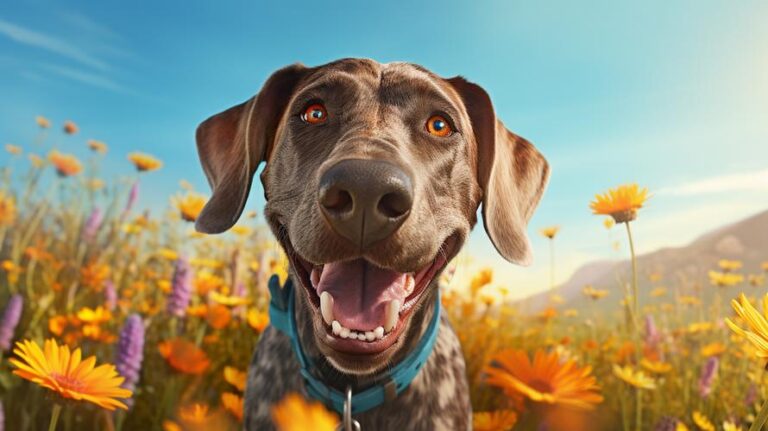Imagine your playful Plott hound dashing across the park, its lean muscles rippling beneath its brindle coat. Suddenly, it skids to a halt, nose twitching as it catches the enticing scent of dinner on the breeze. It’s mealtime, and your devoted furry friend can’t wait to see what’s on the menu tonight. But what should you feed your Plott, especially when it comes to the great grain-free debate?
Well, it turns out that the food bowl decisions you make for your Plott hound might be more important than you think. These energetic dogs are not just pets; they’re part of the family, and like any family member, their health and diet are crucial for a happy, active, and long life.
In recent years, grain-free dog food has become increasingly popular among pet owners. But why? Manufacturers claim that going grain-free is a more natural and healthier choice for dogs, mirroring the diet of their wild ancestors. The idea is that since wolves didn’t raid cornfields or wheat patches, why should our domesticated canine companions? And it’s true that some dogs exhibit allergies or intolerance to grains, causing symptoms like itchy skin, digestive upset, and ear infections. For these sensitive pups, grain-free food seems like the answer to their belly rub prayers.
But hold your horses—well, leash—because the story isn’t that simple. Research required digging deeper into doggie digestive systems and what fuels them best. You see, while it’s accurate that dogs descended from wild wolves, they’re not exactly the same animals when it comes to their dinner plates—or science would say their genome. Due to thousands of years of side-by-side living with humans and munching on our leftover bread and other grain-containing scraps, dogs have actually evolved to digest grains quite efficiently.
Your Plott hound’s ancestors were selectively bred to hunt and track, which requires a lot of energy. This means they need a well-balanced diet, rich in proteins, fats, and yes—carbohydrates. The latter often comes in the form of grains. Grains such as rice, barley, and oats provide vital nutrients, including fiber, which can help keep your Plott’s digestive system running smoothly. They can also be a good source of essential vitamins and minerals that your dog needs.
But before you rush off to restock on your regular chow, you should know that in 2018, something strange started to happen. The Food and Drug Administration (FDA) reported a potential link between grain-free diets and a concerning heart condition in dogs called dilated cardiomyopathy (DCM). This doesn’t mean grain-free food causes heart disease, but it does raise a furry eyebrow. Many of the dogs diagnosed with DCM had been munching on a diet high in legumes like peas and lentils, or potatoes—all common grain-free food ingredients intended to replace the grains.
The puzzle has vets and pet nutrition specialists scratching their heads. Could it be that some essential nutrient found in grains is missing from these diets? Taurine, an amino acid that’s important for heart health, is found in high concentrations in meat, but certain grains might also help dogs process it properly. It’s essentially like a dietary assistant, and without it, the heart might not be keeping the beat as it should.
Now, let’s talk about your Plott hound’s table manners. Not literally whether it chews with its mouth closed, but rather what it should be eating. Considering their active nature, Plott hounds benefit from high-quality, protein-packed foods. The key is balance and knowing what suits your particular pooch. Every Plott is a unique creature with its own energy levels, metabolism, and yes, personal flavor preferences (go figure!).
So, if your Plott is perfectly happy and healthy on its current grain-inclusive diet, there might be no need for a menu makeover. However, if you’ve noticed your dog scratching incessantly, experiencing stomach upsets more often than you’d like to clean up, or just seems generally under the weather, a chat with your vet about dietary changes, including exploring grain-free options, could be on the agenda.
If you decide to switch to a grain-free diet, remember that it’s not just about eliminating grains. The overall nutritional value is what’s most important, and this type of diet should be executed carefully. You need to ensure your Plott is getting all the necessary proteins, fats, and carbohydrates from other sources. A visit to a pet nutritionist might just be as important as their annual check-up.
Substituting grains with high-quality meat, vegetables, and fruits that are safe for dogs is a start. Ingredients like sweet potatoes, carrots, and blueberries can make your Plott’s tail wag just as wildly as a nice cut of lean chicken or beef would. Plus, they are packed with vitamins and antioxidants. And for those considering raw or homemade diets, it’s critical to consult with a veterinary nutritionist to ensure all of your dog’s dietary needs are met.
In the kibble aisle, as you stand before a wall of colorful, persuasive bags of dog food, all boasting pictures of vibrant veggies, majestic meats, and cute canines—you must look beyond the packaging. First, check that it meets the AAFCO (Association of American Feed Control Officials) guidelines, which guarantees that the food is complete and balanced for your dog’s life stage. This holds true whether the food is grain-free or not.
Lastly, always keep an eye on your dog during any diet transition. Just like humans, dogs can have varying reactions to food. Some might thrive on grain-free while others do better with grains in their bowls. Watch for changes in health, energy levels, and overall happiness.
Feeding your Plott hound isn’t just about pouring kibble into a bowl. It’s about understanding the needs of your energetic, courageous, and incredibly loyal companion. Whether they’re munching on grains or going grain-free, your vigilance and love are the main ingredients in their recipe for a long and healthy life. And that’s something they’ll thank you for every day—with wagging tails, sloppy kisses, and unconditional devotion.



